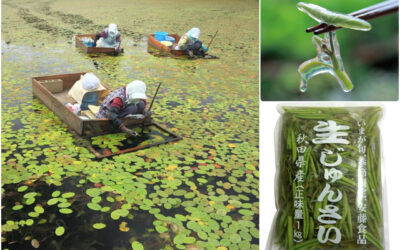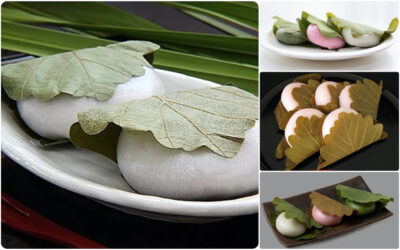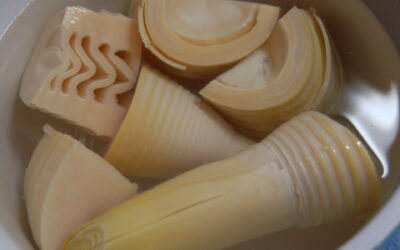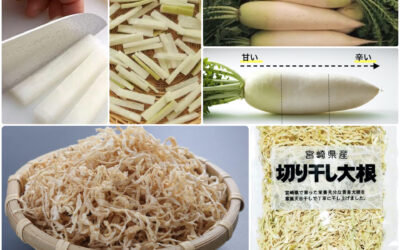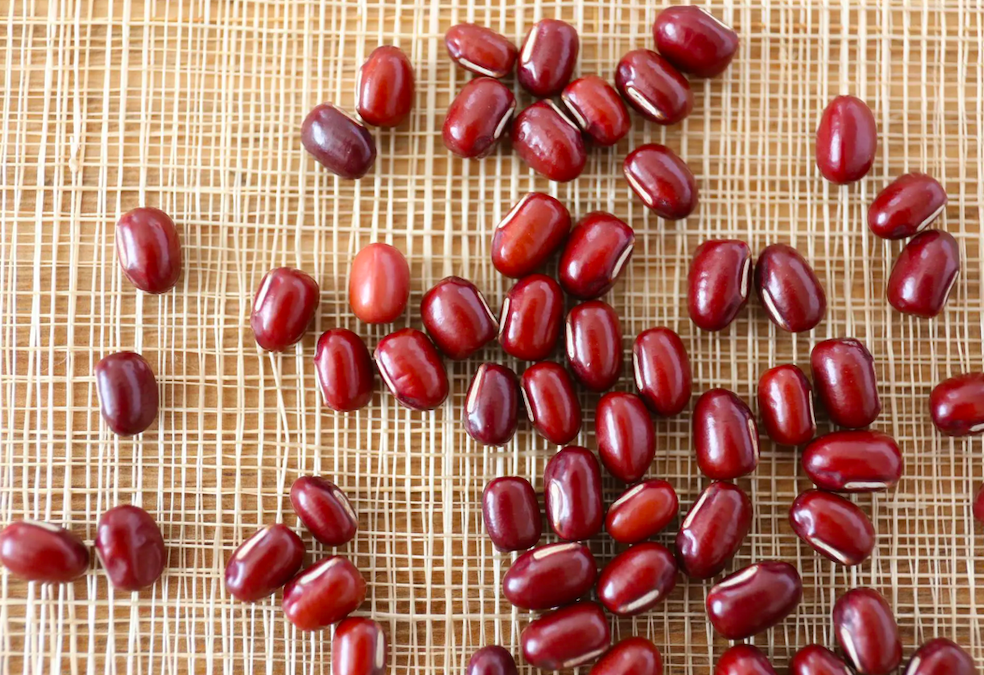
小豆・あずき
ADZUKI (Vigna angularis)
Written with calligraphy for “small” and “bean” these diminutive (about 1/4-inch, less than 1 cm) red beans play an important role in Japanese cookery, appearing in both savory dishes and in sweets.
There are several varitites of adzuki, among them sasagé mamé is a brightly colored red bean that “bleeds” to make a vibrantly tinted liquid, while retaining its shape during cooking. It is the bean of choice for making sekihan 赤飯, the Red Rice and Beans dish served on festive occasions. Both the sasagé mamé bean, and its liquid, is used in making the dish. Download a recipe for making SEKIHAN.
When making chunky red bean jam (generically known as tsubu an 粒餡), dainagon adzuki 大納言小豆 that crush easily when tender, is a better choice. Download a recipe for making TSUBU AN.
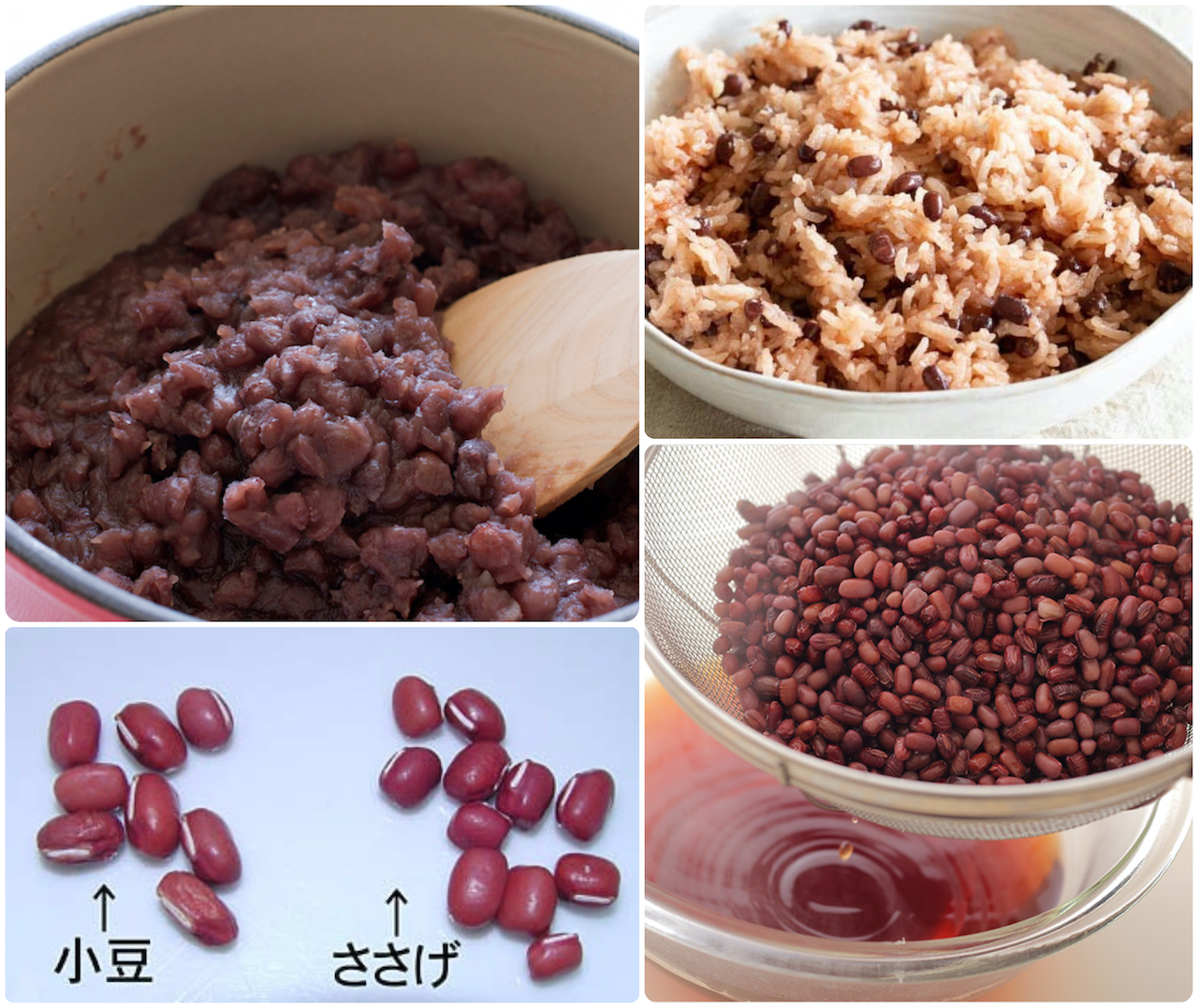
Above ADZUKI on left, SASAGÉ MAMÉ on right.
Visit PROJECT ADZUKI: Sweet & Savory at Kitchen Culture Cooking Club.
My November 2022 newsletter is about Celebrating 7-5-7 (Shichi Go San).

